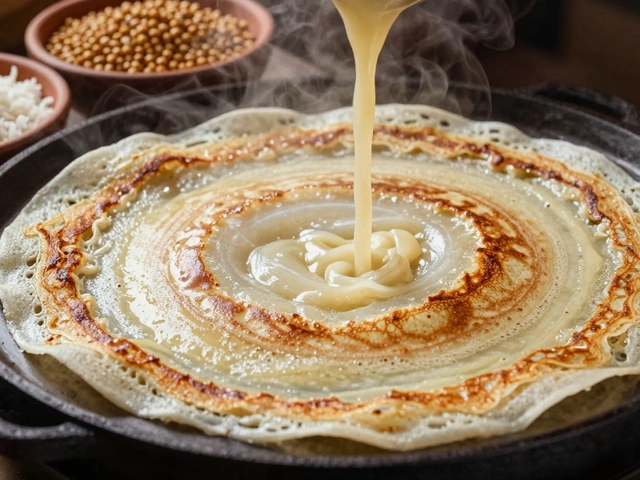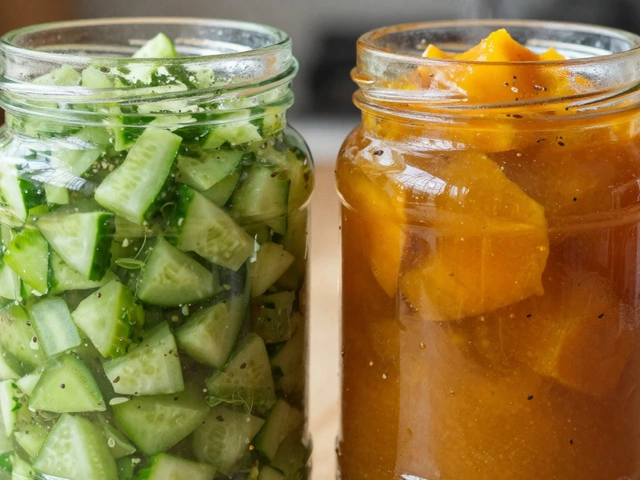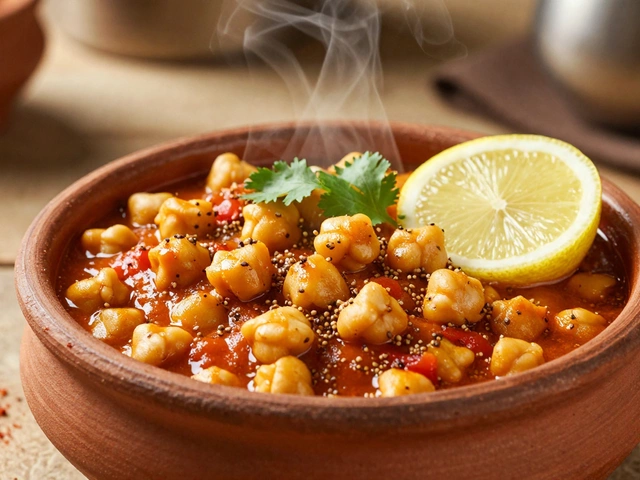If you ask 10 cooks about the secret to great biryani, at least half will talk about the liquid. Get this wrong, and you risk soggy, flavorless rice. Get it right, and the aroma alone will have your neighbors knocking at your door. The liquid isn’t just about helping the rice cook—it actually builds the whole flavor of the biryani, from subtle hand-pounded spices to the rich touch at the very end.
People often debate which liquid does the trick: Is it plain water, stock, milk, or even saffron-milk? The answer depends on the biryani style and, honestly, what you want from your dish. There’s so much confusion around it that some end up pouring in whatever’s handy, crossing fingers and hoping for the best. If you’ve ever had biryani turn out dry, mushy, or just bland, odds are the liquid was the real culprit.
Getting the right balance matters. It’s not just about the type but also how much you add. Ever tried cooking with homemade chicken stock? It changes everything, infusing rice with extra richness that water simply can’t provide. Some cooks swear by a splash of yogurt water to add light tang and keep grains separate. Curious? There’s a method and a reason for each.
- Why Liquid Matters in Biryani
- Traditional Liquids Used in Classic Biryani
- Modern Twists: Alternative Liquids and Their Effects
- Tips for Perfect Biryani Texture
Why Liquid Matters in Biryani
If you want to nail a great biryani, never underestimate the role of liquid. It’s not just about cooking the rice; it actually decides whether the whole pot turns out fluffy, sticky, or bursting with flavor. Every drop affects the way spices, meat, and rice blend together.
Every biryani starts with uncooked rice, usually basmati. This type of rice needs just the right amount of water or stock to expand without breaking apart. The liquid draws out flavors from spices like cardamom, bay leaf, cinnamon, and cloves, helping these aromas stick to every single grain. Got a meaty biryani, like chicken or mutton? The liquid doubles as a carrier, pulling all that smoky flavor into the rice—no taste gets left behind.
- Too much liquid? You end up with mush.
- Too little? The rice stays undercooked or dry.
- Use the right spice-infused liquid, and your kitchen will smell like a pro chef lives there.
Most cooks agree on some basic rice-to-liquid ratios, but there’s no one-size-fits-all. Factors like rice age, soaking time, and the amount of meat or veggies change things fast. Here’s a quick look at how these play out in real homes:
| Rice Type | Liquid Needed (per cup of rice) | Why it Matters |
|---|---|---|
| Regular basmati (soaked) | 1.5 cups | Makes it fluffy but not sticky |
| Old/aged basmati | Up to 2 cups | This rice absorbs more water |
| Sella basmati (parboiled) | 2.25 cups | Needs extra liquid to soften |
The takeaway? Nail the liquid and you’re halfway to an unforgettable biryani. Mess it up and no spice blend or searing technique will save it. The way you handle your liquid is what separates a forgettable biryani from one that people dream about eating again.
Traditional Liquids Used in Classic Biryani
Every classic biryani relies on just a handful of traditional liquids to get that signature flavor and fluffy texture. It’s not guesswork: these liquids were picked after years of trial and error by generations of home cooks and street vendors.
Plain water is still the go-to for most biryanis, but not just any water will do. Smart cooks use hot, boiled water. Why? It keeps the cooking even and helps the rice absorb flavor from the start. A lot of folks don’t realize that pouring cold water on partially cooked rice ruins the texture fast.
If you want deeper flavor, try using homemade meat stock instead of just water. Mutton, chicken, or beef stock brings much more richness. In Hyderabadi biryani, chefs often simmer bones and meat scraps for hours just to get that perfect stock. Here’s a simple comparison to give you an idea:
| Liquid | Flavor Strength | Common Uses |
|---|---|---|
| Hot Water | Mild | All types; basic recipes |
| Meat Stock | Robust | Hyderabadi, Lucknowi biryani |
| Milk | Rich, Sweet Hints | Ambur, some Mughlai versions |
Then there’s saffron milk. This isn’t just for color—saffron steeped in warm milk gets drizzled over the top layer of rice before dum (steaming). It adds a golden color and that subtle floral kick. Mughlai and Lucknowi biryanis always include this step for that ‘royal’ touch.
Another trick is mixing plain unsweetened yogurt with a bit of water. That tangy mixture gets poured over the meat, not the rice, but as it all steams together the flavors blend right in. This also helps tenderize the meat, which shows why yogurt is such a staple in North Indian biryanis.
- Use hot boiled water for a consistent cook
- Swap water with homemade meat stock for richer results
- A touch of saffron milk takes biryani from basic to special
- Yogurt-water mix gives the meat juiciness and boosts taste
The type and amount matter—a Hyderabadi chef I spoke with said one wrong ladle of water can mess up a whole batch, especially when cooking in big pots for hundreds. Stick to classic ratios and you’ll get biryani that’s light, aromatic, and full of flavor.
You don’t need fancy ingredients to nail a biryani recipe, just the right basics and attention to liquid. That’s how the real pros do it at home and in the best biryani stalls across India.

Modern Twists: Alternative Liquids and Their Effects
Traditional biryani purists might frown, but today’s home cooks and chefs don’t shy away from switching things up. Water and stock aren’t the only options. Modern recipes call for a range of liquids that add unique flavors and textures to your biryani.
Let’s talk coconut milk. Some people swear by it, especially in coastal or South Indian biryanis. Coconut milk adds a creamy texture and mellow sweetness that’s honestly hard to beat with just water. Then there’s tomato puree mixed with water, which brings tang and a nice orange color—perfect in vegetable or chicken biryani for a slight Mediterranean vibe.
Dairy is another game-changer. Mixing a little milk with your cooking liquid helps keep the rice fluffy and gives the biryani a mild richness, while yogurt thinned with water can offer a light tang and help keep the rice grains separate. Just don’t go overboard—it’s all about balance.
Saffron milk isn’t just for fancy restaurants. It’s easy to make at home and adds aroma plus that iconic yellow streak. Just dissolve a few strands of saffron in warm milk and drizzle it over the rice right before final steaming. It doesn’t take much to make a difference.
- Coconut milk: Creamy, slightly sweet flavor, softer rice
- Tomato water: Tangy, vibrant color, slightly sticky texture
- Milk: Subtle creaminess, fluffier grains
- Yogurt water: Tangy and light, helps keep rice separate
- Saffron milk: Boosts aroma and color, needs only a little
If you want to experiment, here’s a handy comparison of how these liquids affect your biryani:
| Liquid | Main Flavors Added | Texture Change | Typical Biryani Styles |
|---|---|---|---|
| Coconut Milk | Creamy, sweet | Softer, rich rice | South Indian, Seafood |
| Tomato Water | Tangy, savory | Moist, slightly sticky | Vegetable, Chicken |
| Milk | Mildly creamy | Fluffier, soft rice | Lucknowi, Modern Variants |
| Yogurt Water | Tangy | Light, grains separate | Hyderabadi, Mughlai |
| Saffron Milk | Floral, aromatic | No change, adds color | Royal, Party Biryani |
One last tip—if you mix and match liquids, keep the total amount close to what you’d use for plain water. Too much liquid and you’ll end up with mush. If you’re unsure, try splitting the difference. For example, use a bit of coconut milk plus water, instead of just one or the other. Sounds simple, but sometimes these little tweaks turn out the best results.
Tips for Perfect Biryani Texture
Nailing the texture is what sets great biryani apart from a regular rice dish. You want every grain to stand out—fluffy, fragrant, and soaked with flavor—not stuck together or mushy. Making that happen comes down to a few key things: liquid-to-rice ratio, timing, and the type of liquid used.
- Biryani works best with aged basmati rice. If you can, soak it for at least 30 minutes before you cook, which helps with even cooking and keeps the grains separate.
- The golden liquid rule: for every cup of rice, use about 1.5 to 1.75 cups of liquid (water, stock, or milk mix). If you’re adding meat or veggies that release a lot of moisture, use less.
- Don’t stir the rice after adding it to the liquid. Cover tightly and let it steam. Lifting the lid a bunch of times will mess with your results. Trust the process—let the biryani finish on a low flame or in the oven if you want a restaurant-style texture.
- Mixing in yogurt? Go with a thinner yogurt-water blend to avoid making the rice too sticky. Thick yogurt can turn the grains clumpy.
- Taste the salt in your liquid before you add the rice. It should taste just a little saltier than a soup—rice absorbs more salt than you’d expect as it cooks.
If you’re nervous about measurements, here’s a handy cheat sheet:
| Rice (Cups) | Liquid (Cups) | Cooking Time (Minutes) |
|---|---|---|
| 1 | 1.5-1.75 | 20-25 |
| 2 | 3-3.5 | 25-30 |
| 4 | 6-7 | 30-35 |
Some cooks use the “finger test”: poke your finger into the pot so it’s just touching the rice, then pour in liquid till it comes up to your top knuckle (about 1 inch). It’s old-school, but it actually works pretty well.
Feel like experimenting? Try adding a splash of hot milk with a few strands of saffron to the top before the final steam. It makes the biryani extra rich and gives those signature yellow swirls.
Remember, the type of liquid makes a big difference. Stock gives more depth, water lets the spices shine, milk softens the overall bite, and yogurt brings a gentle tang. No matter what you choose, don’t rush the dum (steam) stage—the last 10-15 minutes with the lid on is when magic really happens.





